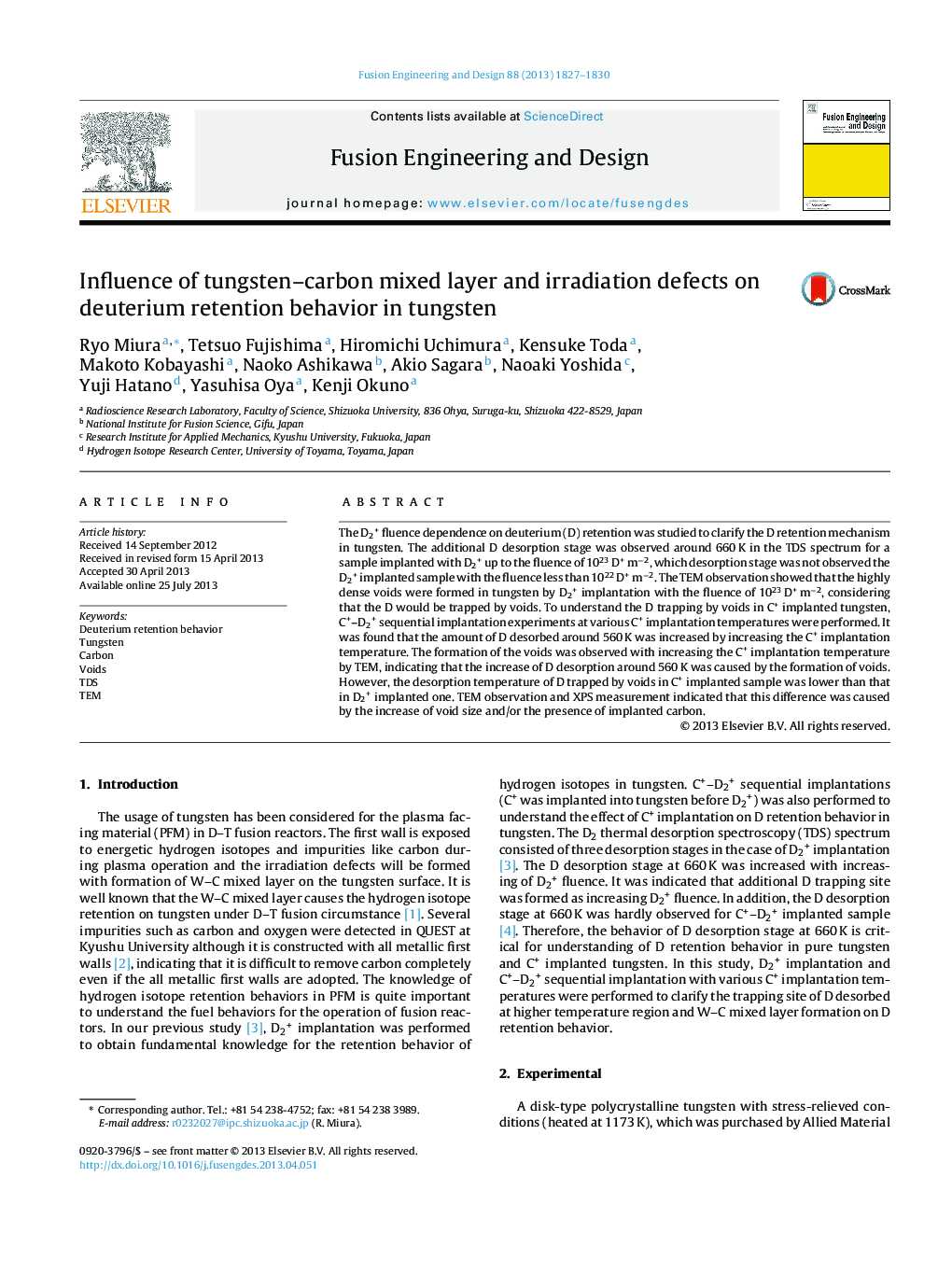| Article ID | Journal | Published Year | Pages | File Type |
|---|---|---|---|---|
| 6746433 | Fusion Engineering and Design | 2013 | 4 Pages |
Abstract
The D2+ fluence dependence on deuterium (D) retention was studied to clarify the D retention mechanism in tungsten. The additional D desorption stage was observed around 660Â K in the TDS spectrum for a sample implanted with D2+ up to the fluence of 1023Â D+Â mâ2, which desorption stage was not observed the D2+ implanted sample with the fluence less than 1022Â D+Â mâ2. The TEM observation showed that the highly dense voids were formed in tungsten by D2+ implantation with the fluence of 1023Â D+Â mâ2, considering that the D would be trapped by voids. To understand the D trapping by voids in C+ implanted tungsten, C+-D2+ sequential implantation experiments at various C+ implantation temperatures were performed. It was found that the amount of D desorbed around 560Â K was increased by increasing the C+ implantation temperature. The formation of the voids was observed with increasing the C+ implantation temperature by TEM, indicating that the increase of D desorption around 560Â K was caused by the formation of voids. However, the desorption temperature of D trapped by voids in C+ implanted sample was lower than that in D2+ implanted one. TEM observation and XPS measurement indicated that this difference was caused by the increase of void size and/or the presence of implanted carbon.
Related Topics
Physical Sciences and Engineering
Energy
Energy Engineering and Power Technology
Authors
Ryo Miura, Tetsuo Fujishima, Hiromichi Uchimura, Kensuke Toda, Makoto Kobayashi, Naoko Ashikawa, Akio Sagara, Naoaki Yoshida, Yuji Hatano, Yasuhisa Oya, Kenji Okuno,
